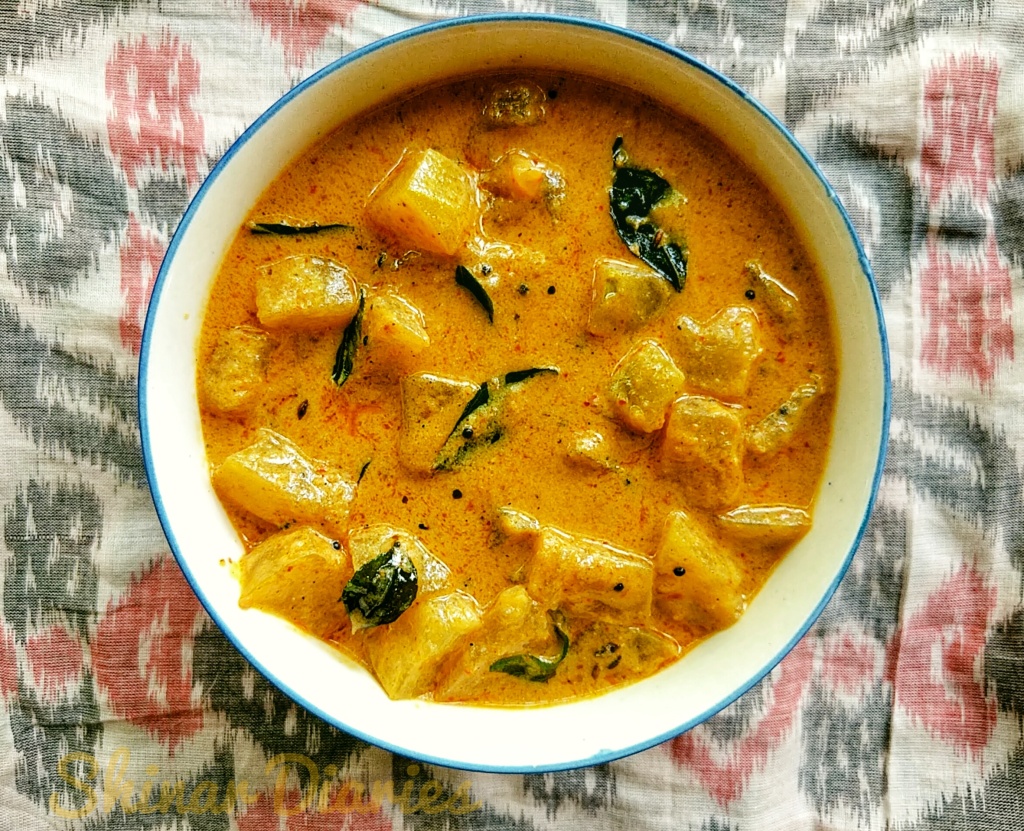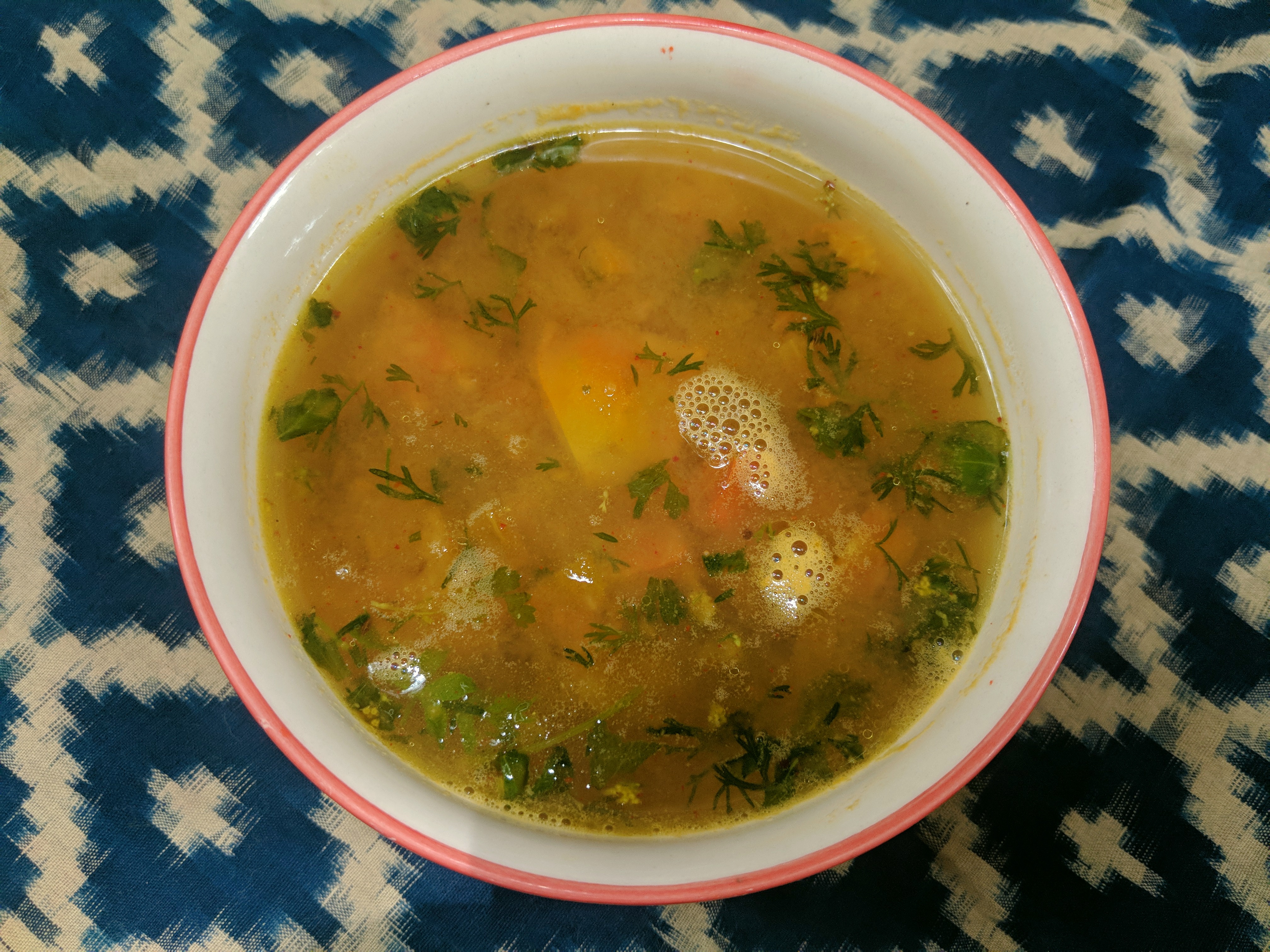White pumpkin or Ash gourd has about 96% water making it ideal for consumption during the summer. It is said to have a calming effect on the nerves and brain, is a natural anti-coagulant, helps combat acidity, and is a good source of many essential minerals and vitamins.
My mother usually gives me garden fresh veggies when I visit. She also tends to buy a little extra on the bigger veggies like pumpkins & cauliflowers so she can split with me. On one fine day, she handed me half a white pumpkin and my father dutifully gave me a recipe. I quickly made the dish and it has to be shared! So here goes:)

Ingredients
2 cups, cubed white pumpkin
1/4 tsp turmeric powder
Salt, to taste
1 tsp jaggery powder
2 tsp coconut oil
200ml coconut milk
2 tsp coriander seeds
2 tsp urad dal
A pinch hing (asafoetida)
4 dry red chillies (I used Guntur variety)
1/2 tsp black peppercorns
Tamarind, size of two marbles
For tempering
2 tsp coconut oil
1/4 tsp mustard seeds
1/2 tsp cumin seeds
A pinch hing (asafoetida)
12-14 curry leaves
Instructions
1. Peel, de-seed and cube the white pumpkin. Add to a pan with 1/2 cup water, salt and turmeric. Cover and cook until tender.
2. While the pumpkin cooks, make the masala paste. Heat 2 tsp coconut oil in a small pan, add hing. Then add the urad dal, pepper and coriander seeds. When the dal starts turning golden, add the chillies. Saute for a few seconds and keep aside to cool. Leave the tamarind on this mix.
3. Once the mixture is cool, grind with 1/4 cup water until smooth. You can also use a little coconut milk to grind.
4. Once the pumpkin is tender, add the masala paste to it along with the coconut milk and jaggery powder (add water if you need to adjust consistency) and let it come to a boil on medium flame.
5. Adjust salt and temper. For the tempering: heat oil, add mustard and let it splutter. Then add cumin, hing and curry leaves. Pour over the pumpkin stew, give it a gentle mix and take off heat.
Serve hot with rice and/or phulkas/chapathis.
Notes:
1. You can also use fresh grated coconut instead of coconut milk. Simply add about 1/4 cup while grinding the masala paste. You would have to add water to the stew while adding the paste, to get desired consistency.


















